How to break through creative blocks in music
I know how stuck and frustrated you can feel. This guide shows practical, repeatable tactics I actually use: improvisation, free-play, quick takes, songwriting prompts, short timed sprints, and a pocket notebook for sudden lines. I build daily habits and a tiny ritual to signal creative time, celebrate small wins, and use mindset tricks to chop big songs into bite-sized steps. I remix old ideas, collaborate with rough sketches and clear micro-goals, keep workflow hacks and an inspiration folder, and write feelings first to heal and move forward. These are the exact moves I rely on when I ask myself, How to break through creative blocks in music.
Key takeaway
- Take a short walk to clear your head.
- Set tiny goals so you don’t feel overwhelmed.
- Let yourself play messy music without judging.
- Change instrument, tempo, or key to wake ideas.
- Ask a friend for focused feedback when you’re stuck.

Improvisation: play before you plan
Improvisation is a playground. Curiosity beats pressure. Small, playful moves get your hands and heart talking again — a reliable first step for How to break through creative blocks in music. Try some short improvisation exercises to spark ideas like call-and-response drills and focused scale play to warm up your ears.
Short free-play sessions (5–10 minutes)
- Set a timer and play with no agenda.
- Pick a simple key or scale and try odd rhythms, silly fingerings (start with a basic overview of scales explained in plain English if you’re unsure).
- Treat mistakes as fuel.
Example: a seven-minute C major noodling session once produced the hook for a finished track.
Record quick takes
- Keep your phone or recorder handy.
- Record 30–90 second clips, label each take with one word (mood, idea).
- Later, listen for phrases not perfection; chop and stitch promising bits — a great companion practice to writing your first melody without overthinking.
This habit turns fleeting ideas into raw material and helps you push past perfectionism — a core answer to How to break through creative blocks in music.
Call-and-response with a metronome
- Set tempo slow (60–80 BPM). Play a 2–4 bar call, pause one bar, respond.
- Repeat, gradually speeding up; change dynamics to keep it interesting.
This builds momentum and commitment fast.

Songwriting prompts and exercises
When melody dries up, prompts and short exercises open a window. These are focused, low-pressure moves for How to break through creative blocks in music.
Focus on one image or phrase
- Choose a concrete image (neon sign, empty train seat) or short phrase (stay past midnight).
- Ask: what sound matches this image? Bright/staccato or soft/legato?
A single image anchors mood, rhythm, and melody.
Five-minute writing sprints
- Timer on for five minutes. Write or sing without editing.
- Pick one line you like and sprint again.
Keep your phone away except for the timer. Trust first responses — this pairs well with quick-start approaches like overcoming the fear of starting.
Pocket notebook
Capture single words, odd rhymes, and quick images. Later, mine the messy notes for hooks and lines — and use them when you need a gentle reminder that music can clear your mind while you write.
Daily habits that prevent freeze
Small, repeatable habits stack over time and answer the question How to break through creative blocks in music in a practical way.
Short daily sessions (10–25 minutes)
- Treat each session like a sprint with one small goal (melody, chord change, groove).
- Warm up briefly, improvise, then record or note a favorite idea.
Tiny slots of play add up far quicker than rare long marathons — see ideas for a simple daily practice routine and the power of just twenty minutes daily.
A simple creative ritual
- Make one decision ahead (instrument, tempo).
- Use a cue: brew tea, dim a light, play a two-minute warm-up playlist.
- Strike one chord and breathe before starting.
A short list of rituals that help you enter practice mode can reduce resistance and consistently flip the switch to creative time.
Celebrate tiny wins
- Check a box when you finish a line or loop.
- Save rough voice notes and share one small clip with a friend.
- Create a “Wins” folder for progress.
If progress feels slow, strategies from staying motivated when progress feels slow help sustain momentum.
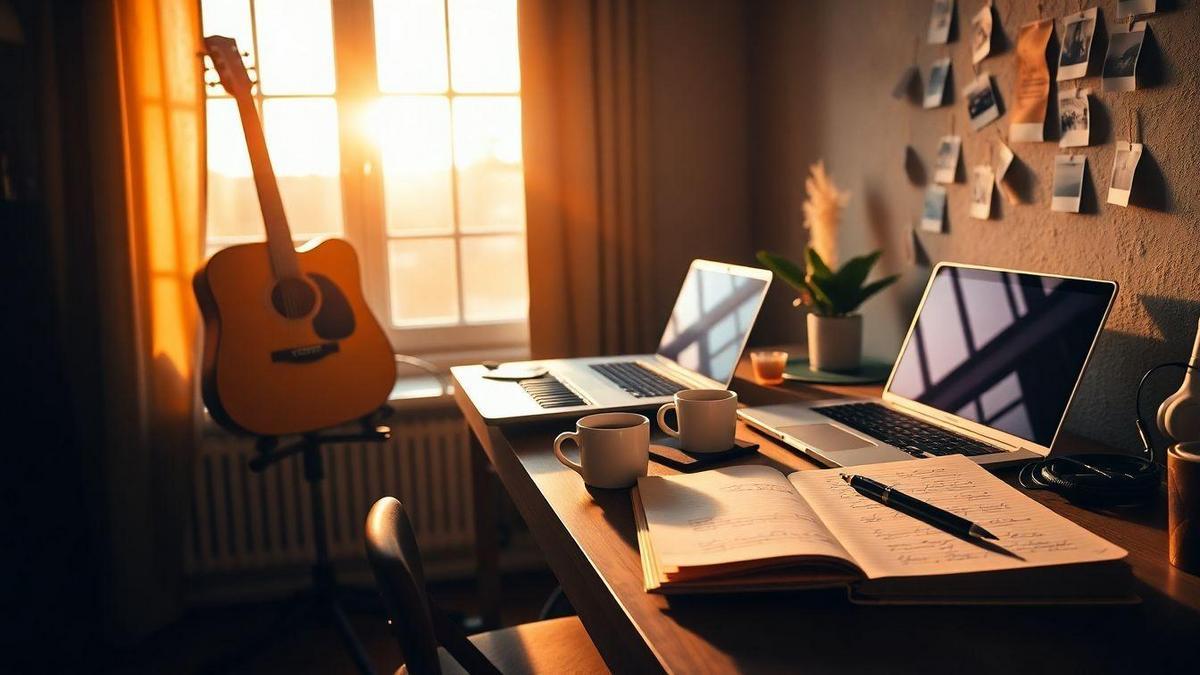
Mindset and focus techniques
Pressure is creativity’s enemy. Calm, incremental steps and playful curiosity are the solutions.
Break big songs into tiny tasks
- Pick one tiny goal: a groove, a 4-bar melody, a chord change.
- Use a short timer (10–15 minutes). Progress, not perfection.
Small parts join later like puzzle pieces — an approach echoed in advice on stopping procrastination on practice.
Breathing and short breaks
- Breathe deeply for one minute.
- Step away for 3–5 minutes: walk, stretch, make tea.
- Try focus cycles (25/5 or 15/3) to refresh ears and mind.
You can follow simple breathing exercises to reduce pressure from trusted sources to lower stress and refocus before returning to a session.
Treat mistakes as experiments
- Label the issue (rhythm, harmony, feel).
- Try three small fixes in two minutes.
- Keep what sparks something.
Errors often point to interesting turns — remember that making practice fun instead of a chore changes how you evaluate mistakes.
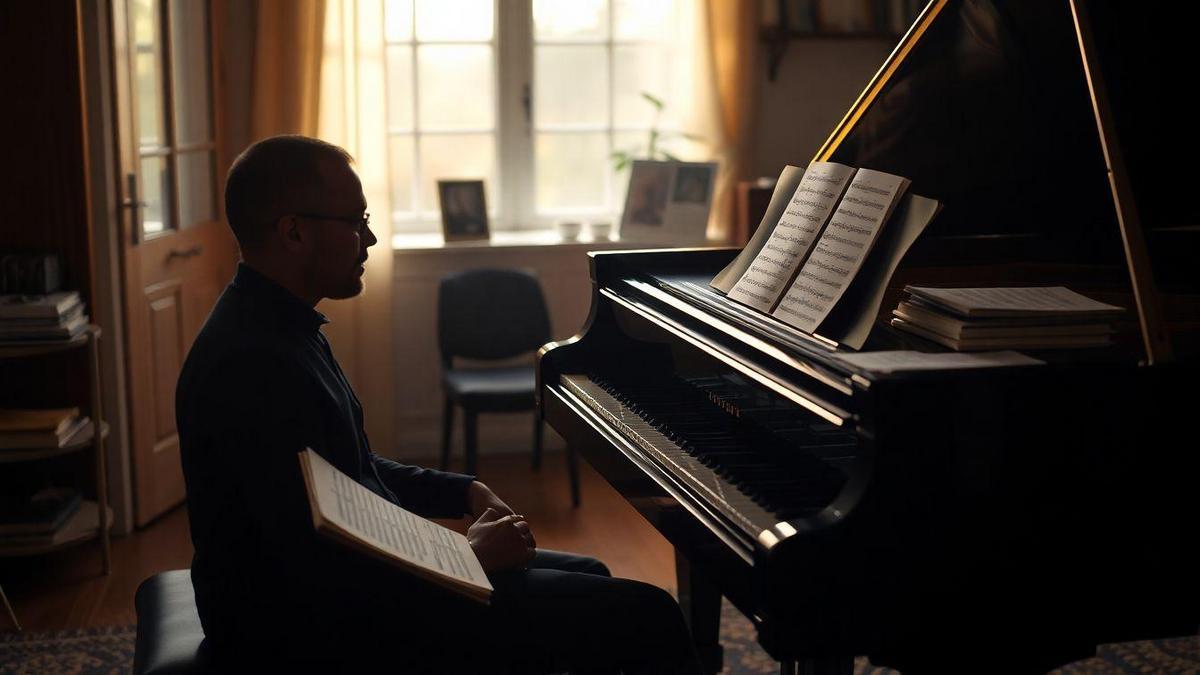
Remixing and rearranging old ideas
Old sketches are a pantry of ingredients. Tweak one element at a time to get fresh results — a direct path for How to break through creative blocks in music.
Change tempo, key, or groove
- Slow a loop 20–30% to reveal rhythms; speed it up for urgency.
- Shift key or convert straight time to swing.
- If you’re deciding on new timbres, a short guide to choosing an instrument can free you from second-guessing.
Swap instruments or move hooks
- Try synth → piano, guitar → cello, or move a chorus hook into the intro.
- Contrast textures for new shapes.
Loop and try chord maps
- Loop 2–4 bars and run three chord maps: diatonic, unexpected minor, borrowed chords.
- Record each pass and pick the mood-shift that sings. If you want a refresher, what chords are and why they matter and how to read chords and sheet music make chord-mapping less mysterious.
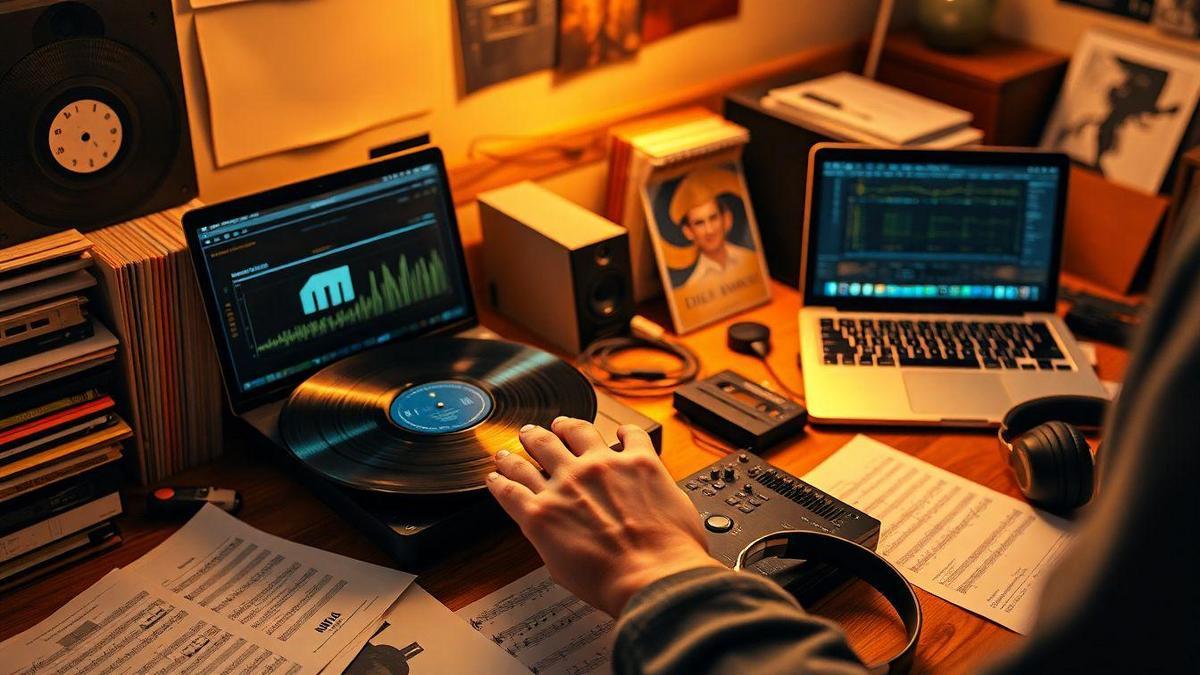
Collaboration and feedback
Fog lifts faster with other perspectives. Collaboration is a lantern for How to break through creative blocks in music.
Share rough sketches
- Send messy voice memos, half-chord progressions, or beats with gaps.
- Ask focused questions: Does the chorus need lift? or Which line feels cliché?
Roughness invites candid, actionable feedback and helps if you’re wrestling with fear of starting.
Trade short ideas
- Swap 8-bar loops, vocal tags, or quick stems.
- Keep exchanges short and playful — weird ideas often become hooks and play well into making practice playful.
Agree on a micro-goal for co-writes
- One clear aim (finish chorus melody), a time limit, roles, and a next step keep sessions productive.
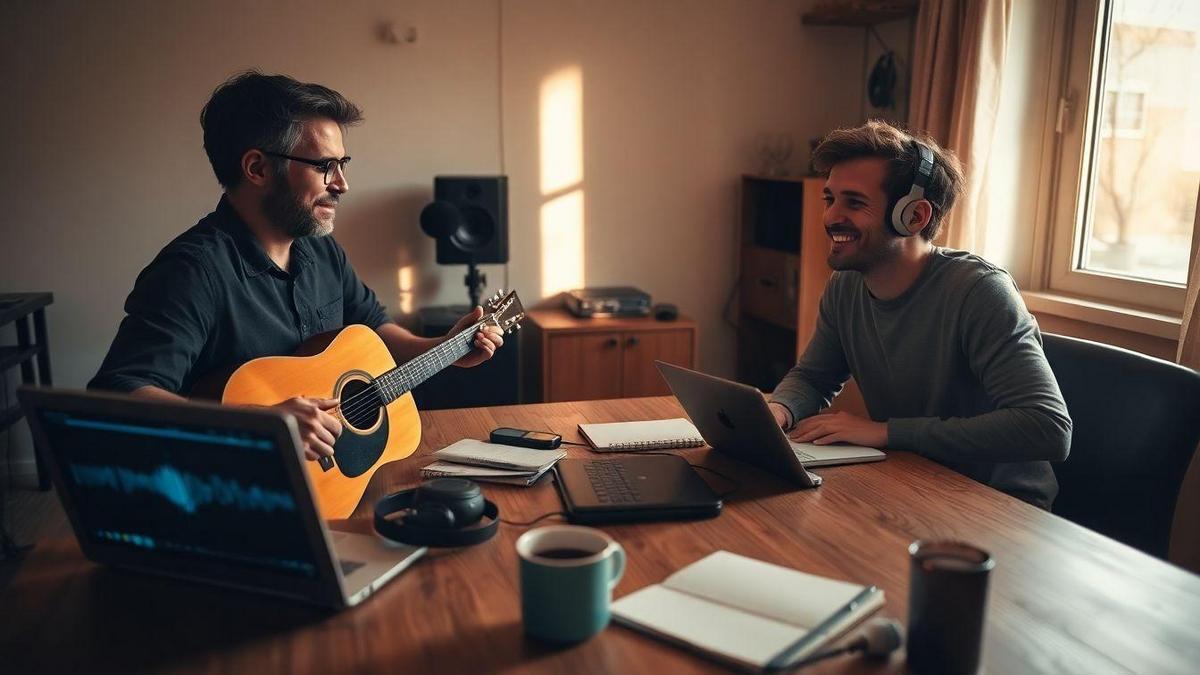
Workflow hacks to lower friction
Remove setup decisions so you can get to playing — that’s a practical approach to How to break through creative blocks in music.
Templates and presets
- Build session templates for moods (sparse piano, lo-fi beat).
- Save EQ/reverb/drum bus presets to cut setup time — these shortcuts help with staying consistent.
Version files
- Duplicate projects before big edits and label clearly (v1, v2-guitar).
- Experiment on copies to stay fearless. For practical tips on organizing and preserving audio collections, see guidance on organizing and preserving recordings.
The 20-minute rule
- Set a timer for 20 minutes to push a sketch forward: pick a focal instrument, add a B section, make one mixing move. Save as a new version and step away.
- This is the idea behind the power of just twenty minutes daily.

Refill the idea well
Inspiration comes from many small sources.
Study other genres
- Isolate one element (drum pattern, chord movement, texture).
- Adapt it: change tempo, meter, or instrumentation.
- If a passage moves you, reading about why some songs give us goosebumps can reveal techniques to borrow.
Field recordings and ordinary sounds
- Record a coffee grinder, footsteps, or city noise.
- Slice, pitch-shift, loop, or tune it into a melodic or rhythmic seed — field sounds often trigger the same recall described in the link between music and personal memories. You can also explore public collections like field recordings and sound archive inspiration sources for fresh samples and ideas.
Keep an inspiration folder
- Save voice memos, short video clips, photos, and one-line notes.
- Tag items (lyric, rhythm, mood) and review a handful before writing.

Songwriting & personal growth
Use songwriting to process feeling and find direction when you’re blocked.
Write feelings first
- Freewrite for 5–10 minutes about a single moment.
- Highlight lines that sting or sing; read them aloud to find natural rhythm and a hook.
This approach ties into ideas about adding emotion to every note and using music for clarity in music as therapy. If you want to learn more about how music supports mental health, see resources on using music-making to support emotional wellbeing.
Revisit past songs
- Listen to old demos for repeating emotional threads.
- Rework a line from a new angle; sometimes closure or contrast is the spark.
Allow private experiments
- Keep a “private experiments” folder for ugly drafts.
- Save rough memos and try wild ideas without guilt — this mindset echoes lessons in what I wish I had known.

Conclusion
How to break through creative blocks in music isn’t mystery — it’s a practice. Play more than you plan. Use short sprints (five minutes, twenty minutes), capture quick takes, remix old ideas, and ask for focused feedback. Build tiny, repeatable rituals and celebrate small wins. Treat mistakes as experiments and give yourself a private lab for rough drafts. Show up often; creativity is less lightning and more steady collection of small moments.
If this helped, keep the momentum going at https://clickneutro.com.
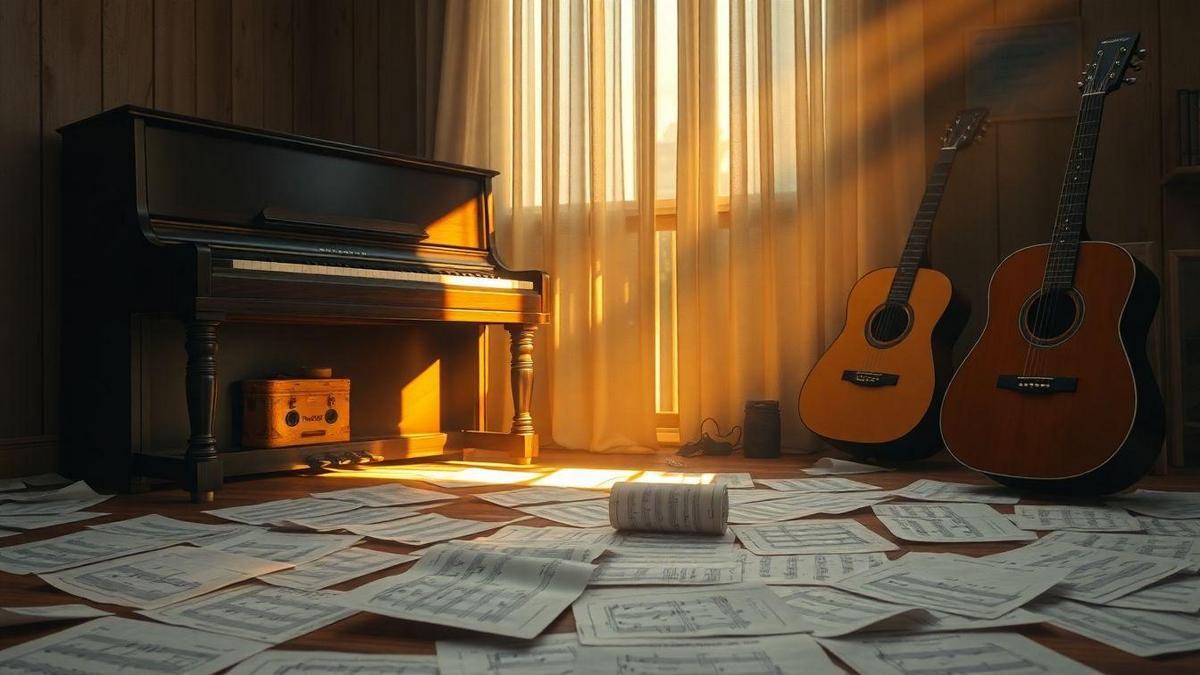
1 comentário em “How to break creative blocks in music”